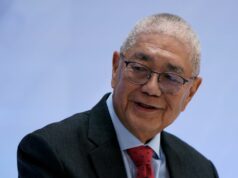Cashless worker-motivation strategies for the COVID-19 era
In this pandemic when almost all organizations have scarce and limited resources, what would you advise on the best way to continue motivating workers? What would be the role of the human resource department in making such inexpensive motivational strategies successful? Please let me know. — Green Submarine.
A river fisherman felt a bump against the side of his boat. Looking down, he saw a snake with a frog in its mouth. The fisherman grabbed his oar and whacked the snake, making it dropped the frog, which swam quickly out of the harm’s way. Feeling sorry for the snake, the fisherman look around for something to give it.
He saw a bottle of rum and gave the snake a long swig. The snake swam off a bit dizzy but apparently happy. After 10 minutes, the fisherman felt another bump. There was the same snake again, this time holding two frogs in its mouth.
This was a parable told by Michael LeBoeuf in his 1985 book — The Greatest Management Principle in the World — to emphasize how motivation works. When you reward people (even animals) with the thing they like best, they are motivated to work hard to get what they deserve.
Theoretically speaking, the best employee reward and recognition programs are those that meet the needs of majority of your workforce. Usually, these are material things. And since money is not everything and we’re in pandemic mode with almost all companies watching their cash, the best thing that you can do is to put up something that costs the company very little.
CASHLESS MOTIVATIONAL STRATEGIES
However, cashless motivational strategies are only possible if management focuses on the intrinsic motivation of its people. This is done by making the tasks enjoyable and fun, with employees aware that the work they’re doing is meaningful not only for the organization but for workers as well. Here are five of my favorite cashless strategies that all companies, regardless of industry, may use as a template:
One, write a letter of appreciation to the worker’s family. Why not directly address it to the worker? That’s the old style. Sharing pleasant news with the employee’s family is the novel approach. It’s one way to strengthen ties in the family which makes it value-adding. The original copy must be sent via a private courier for faster delivery, with a copy circulated among the worker’s colleagues and filed with the human resource (HR) department.
Two, arrange a surprise face-to-face visit by the CEO. The visit to the worker must be witnessed by all workers in the department. If this is not possible, a five-minute telephone or video call could be a second option. Imagine the thrill of receiving the special attention of the CEO, if not his deputy or anyone from the senior management team.
Three, frame a beautifully-crafted commendation letter. The frame may include a photo of the worker while he’s at work. It must describe specifically what the worker has done to exceed expectations. The letter must be signed by the employee’s colleagues and bosses and posted on the company’s bulletin board, copy furnished to the HR department.
Four, a written assurance that the worker’s job is secure. This must be worded in such a way to protect the company’s interests, in case the adverse business conditions due to the pandemic continue. The letter may state the need to maintain above-average work performance or possibly an assurance that the worker may be the last to be released in the event of unforeseen circumstances.
Last, ask the worker about his career interests. Hear it directly from the horse’s mouth. Consider asking the worker if he or she is interested in managing a special project, learning new skills, taking on a team leadership role, solving an operational issue, or developing a new program that could increase revenue, if not eliminating major expenses. If the answer is no, offer a flexible work arrangement suitable to the employee’s lifestyle.
HR DEPARTMENT’S ROLE
While organizations should always be on the lookout for management best practices, not every people manager can afford to do that. That’s where the HR department should come in to work on certain motivational strategies that could be applied corporate-wide. This may include how to direct the attention of line supervisors and managers to work performance that exceeds expectations.
Managers should not be satisfied with average performance or focus on close supervision to identify the bad apples. That’s a bad example of command-and-control. Instead, focus on “catching people doing something right.” It’s a timeless piece of advice from Kenneth Blanchard and Spencer Johnson, co-authors of One Minute Manager (1982).
When you start focusing on the positives, you begin to eliminate, if not reduce the negatives in the process. There’s nothing new in this. We’ve been hearing a lot about employee empowerment and engagement. By giving employees the full trust and the responsibility to get things done their way (subject to certain limitations), we can unleash tremendous amounts of worker energy.
HR should be the lead department on this, not only to ensure uniform application, but to serve as the in-house expert on people management for all departments.
ELBONOMICS: Emphasize the positive, eliminate the negative without spending money.
Send anonymous questions to elbonomics@gmail.com or via https://reyelbo.consulting



